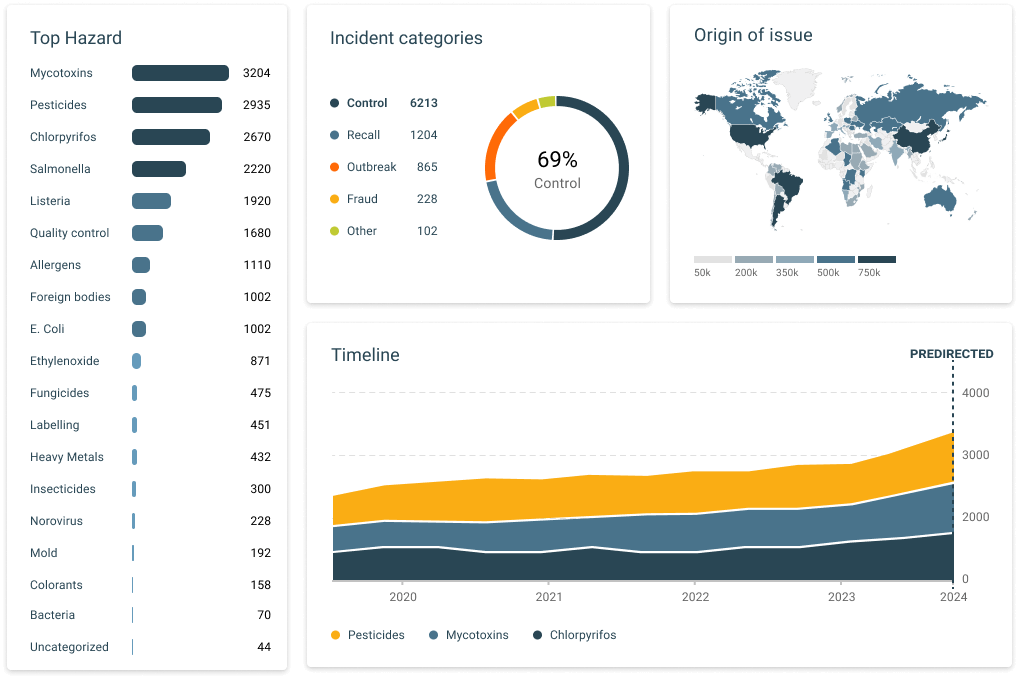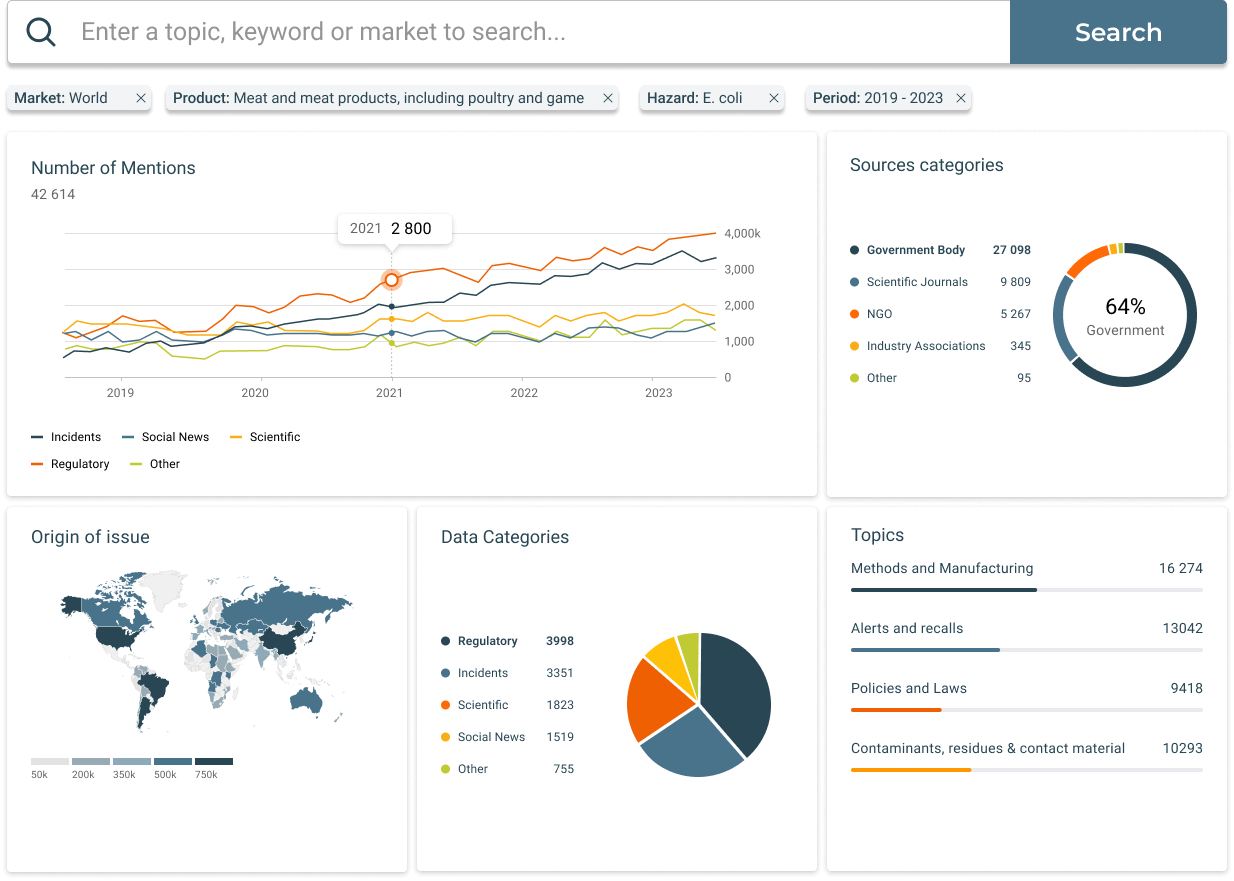Food fraud reports are highly instrumental in characterizing and reducing the occurrence of fraudulent cases in the food sector. They give a clear illustration of the different types of fraud, their impacts, and measures to prevent them. Through records of the incidents and the trends analyzed from them, food fraud reports will keep regulatory bodies, industry participants, and consumers informed and at a high level of alert. They aid in taking measures for food safety and public health protection and build trust up and down the food supply chain. Ways through which one can prepare an effective food fraud report are necessary in fighting this widespread problem.
Understanding Food Fraud
Food fraud involves the intentional misrepresentation of food products for economic gain. This can take several forms, including:
-
Adulteration: Adding inferior or harmful substances to products.
- Example: Melamine in milk to falsely increase protein content.
-
Substitution: Replacing high-value ingredients with cheaper alternatives.
- Example: Olive oil diluted with cheaper oils.
-
Counterfeiting: Producing and selling imitation products.
- Example: Fake wines and spirits.
-
Mislabeling: Providing false information about a product's origin, quality, or ingredients.
- Example: False organic labels on conventional products.
Understanding these types of fraud is essential for creating effective reports that can help detect and prevent fraudulent activities in the food industry.
Key Components of a Food Fraud Report
Creating a comprehensive food fraud report involves several critical components that ensure its effectiveness and reliability. Here’s a detailed look at each component:
Data Collection
Effective data collection is the foundation of a reliable food fraud report. The process involves gathering information from diverse and credible sources to provide a comprehensive overview of the food fraud landscape.
-
Sources of Data: Reliable data sources include regulatory agencies, industry reports, scientific studies, and surveillance programs. Regulatory bodies like the FDA and EFSA publish regular updates on food fraud incidents and trends, which are invaluable for comprehensive reporting. Industry reports from organizations like the Global Food Safety Initiative (GFSI) offer insights into current practices and emerging threats. Additionally, scientific studies provide detailed analyses of specific fraud cases and detection methods.
-
Methods for Data Collection: Various methods are employed to gather accurate and relevant information. Surveys and audits help in understanding industry practices and identifying potential vulnerabilities. Laboratory tests are crucial for detecting adulteration and ensuring product authenticity. Supply chain documentation and traceability records are essential for tracking the movement of goods and identifying points where fraud might occur.
-
Ensuring Data Integrity: It’s vital to ensure the accuracy and integrity of the collected data. Cross-referencing information from multiple sources, validating laboratory results, and conducting thorough audits can help in maintaining data reliability. Using standardized data collection methods and tools also enhances the quality of the data.
Data Analysis
Once data is collected, it needs to be thoroughly analyzed to identify patterns, trends, and specific incidents of food fraud. Effective analysis transforms raw data into actionable insights.
-
Techniques for Data Analysis: Statistical tools and software are employed to analyze large datasets. Techniques such as trend analysis, cluster analysis, and anomaly detection help in identifying patterns that indicate potential fraud. Advanced analytical methods, including machine learning and AI, are increasingly used to predict and detect food fraud by recognizing complex patterns and correlations.
-
Use of Software and Tools: Software platforms designed for food fraud analysis can streamline the process. These tools allow for efficient data handling, visualization, and reporting. Platforms like IBM’s Food Trust use blockchain technology to enhance traceability and transparency, providing an additional layer of security and reliability.
Report Structure
A well-structured report is crucial for effectively communicating findings and recommendations. Here’s a breakdown of the essential sections of a food fraud report:
-
Executive Summary: This section provides a concise overview of the report’s key findings and recommendations. It is designed for quick reading by decision-makers who need to understand the report's highlights and implications without delving into detailed analysis.
-
Methodology: A detailed explanation of the data collection and analysis methods used in the report. This section ensures transparency and allows readers to assess the reliability of the findings. It should include descriptions of the sources, tools, and techniques used in the study.
-
Findings: The core section of the report where detailed analysis and results are presented. It should cover identified patterns, trends, and specific fraud incidents. Visual aids like charts, graphs, and tables can enhance the clarity and impact of this section.
-
Recommendations: Based on the findings, this section provides actionable recommendations for stakeholders. These can include suggested regulatory changes, best practices for industry, and measures for enhancing consumer awareness and protection.
-
Conclusion: A summary of the report's key points, emphasizing the importance of ongoing vigilance and the need for continuous improvement in food fraud detection and prevention.
-
References: A list of all sources used in the report, ensuring transparency and allowing readers to verify information and further explore the topic.
By meticulously following these components, a food fraud report can provide valuable insights and serve as a powerful tool in the fight against food fraud.
Steps to Compile a Food Fraud Report
Creating a comprehensive food fraud report involves several key steps that ensure accuracy, reliability, and usefulness. Here’s a detailed guide:
1. Identifying Objectives
Start by defining the purpose and scope of the report. Determine what you aim to achieve—whether it's identifying current fraud trends, evaluating the effectiveness of prevention measures, or providing recommendations for stakeholders. Clear objectives will guide the data collection and analysis process.
2. Gathering Data
Collect data from reliable sources such as regulatory agencies, industry reports, scientific studies, and surveillance programs. Use methods like surveys, audits, and laboratory tests to gather accurate and relevant information. Ensure data integrity by cross-referencing multiple sources and validating results.
3. Analyzing Data
Analyze the collected data to identify patterns, trends, and specific incidents of food fraud. Use statistical tools and software for detailed analysis. Techniques such as trend analysis, cluster analysis, and anomaly detection can help in recognizing potential fraud. Employ advanced analytical methods like machine learning and AI for more sophisticated analysis.
4. Organizing and Drafting the Report
Structure the report clearly to make the findings easily understandable. Include the following sections:
- Executive Summary: Summarize key findings and recommendations.
- Methodology: Explain data collection and analysis methods.
- Findings: Present detailed analysis and results, using visual aids like charts and graphs.
- Recommendations: Provide actionable steps based on the findings.
- Conclusion: Summarize the report’s key points.
- References: List all sources used in the report.
5. Reviewing and Revising
Conduct a thorough review of the draft report. Peer review can help identify any errors or areas for improvement. Ensure all data and findings are accurate and that the report is clear and concise. Make necessary revisions to enhance the quality and reliability of the report.
Case Study: The Horse Meat Scandal
In compiling a food fraud report on the 2013 horse meat scandal, the objectives included understanding the extent of the fraud, identifying the supply chain vulnerabilities, and recommending preventive measures. Data was gathered from regulatory bodies, industry audits, and laboratory tests. Analysis revealed significant substitution and mislabeling practices. The report provided recommendations for tighter supply chain controls and improved regulatory oversight.
How SGS Digicomply Enhances Food Fraud Reporting
In the battle against food fraud, comprehensive and accurate reporting is crucial. SGS Digicomply offers advanced tools and features that significantly aid in creating detailed food fraud reports, leveraging AI and real-time data analytics.
Food Safety Intelligence Hub
The Food Safety Intelligence Hub aggregates global food safety data, offering real-time insights into potential fraud. AI analyzes patterns and trends to detect anomalies, helping to prevent fraud before it impacts the market. Watch demo.

Regulatory Intelligence Hub
This hub monitors and updates global regulatory changes, ensuring compliance and highlighting areas at risk of fraud. It provides comprehensive regulatory information, which is crucial for accurate and up-to-date food fraud reports. Watch demo.

Global Ingredient Monitor
The Global Ingredient Monitor tracks ingredient authenticity and quality across the supply chain. Using AI, it detects adulteration and substitution, providing detailed reports on ingredient integrity. Watch demo.

Horizon Scanning
Horizon Scanning uses AI to predict emerging food fraud threats by analyzing global data sources. It offers early warnings and trend analyses, helping stakeholders to prepare and mitigate potential fraud risks. Watch demo.

SGS Digicomply’s AI-driven tools significantly enhance the ability to detect, report, and prevent food fraud by providing accurate, real-time, and comprehensive data and insights.





.webp?width=1644&height=1254&name=Food%20Safety%20Dashboard%201%20(1).webp)
